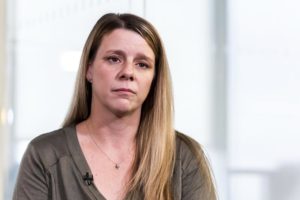There is an old saying that when white America catches a cold, African Americans catch pneumonia. Whether it was the Great Depression, Hurricane Katrina or the Great Recession, entrenched racial discrimination causes black communities to experience disproportionate suffering and hardship. While the COVID-19 virus can afflict anyone, America’s long history of racially discriminatory political, economic and social policies creates conditions that put African Americans at substantially greater risk of contracting and dying from the coronavirus.
Housing segregation and redlining have disproportionately forced African Americans into communities that have been systematically under-resourced — limiting access to quality schools, food, medical care, jobs, housing and business ventures.
This longstanding pattern of segregation is worsened by environmental racism, which adds another layer of vulnerability as these communities are likely to be near sites of contamination — landfills, incinerators, refineries, chemical plants — and further away from clean water, air and soil. This is a form of invisible violence that deprives communities of healthy living environments and is compounded by unequal access to health care, substantially intensifying the risk of chronic conditions that compromise immune systems like asthma, diabetes and hypertension.
Not surprisingly, preliminary data suggest African Americans will likely bear an excessive brunt of coronavirus infections and fatalities. Currently, the U.S. Centers for Disease Control and Prevention only releases location and age data; it not include the race of COVID victims. But Michigan and Illinois are two states that do, as well as the cities of Detroit and Milwaukee. Data from each one show an overrepresentation of African American infections and deaths.
For example, in Michigan, black Americans are 14% of the state’s population, but are 33% of positive test results and 40% of all COVID-19 deaths. Similarly, in Illinois, African Americans are 14% of the population, but 29% of positive test results and 41% of fatalities.
New York City apparently does not track the virus by race, however, analyzing the zip codes of infected patients shows the virus is heavily concentrated in poor communities which is often a proxy for race. As black communities are likely contracting and dying from COVID-19 in unequal numbers, the tragedy is worsened by the relative scarcity of resources, namely testing, culturally competent medical staff, as well as equipment that could potentially save lives.
The crisis has also shed a spotlight on racial and class disparities in the work we do. As we are instructed to self-isolate, managers and professionals videoconference, practice social distancing and remain financially secure, but high percentages of African Americans and other vulnerable workers are forced to choose between going to work to get a paycheck and their health.
Since African Americans tend to be overrepresented in jobs with limited benefits that cannot be performed from home — health-care support, cashiers, transportation and food service — these jobs place workers at greater risk for contracting the virus and present a dilemma of working while ill and potentially exposing others.
The COVID-19 pandemic is a further reminder of why American racism continues to render African American communities more vulnerable during crises. Yet at the same time, the tragedy also creates an opportunity to stop this pattern.
First we need to understand how and why African Americans and other vulnerable communities remain disproportionately at risk. Then we must implement public policies that make structural changes that substantially reduce the possibility of reoccurrence. This must include strong anti-discrimination enforcement as well as initiatives that provide access to high-quality health care, housing and education, and funding for business development, debt forgiveness and wealth creation.




